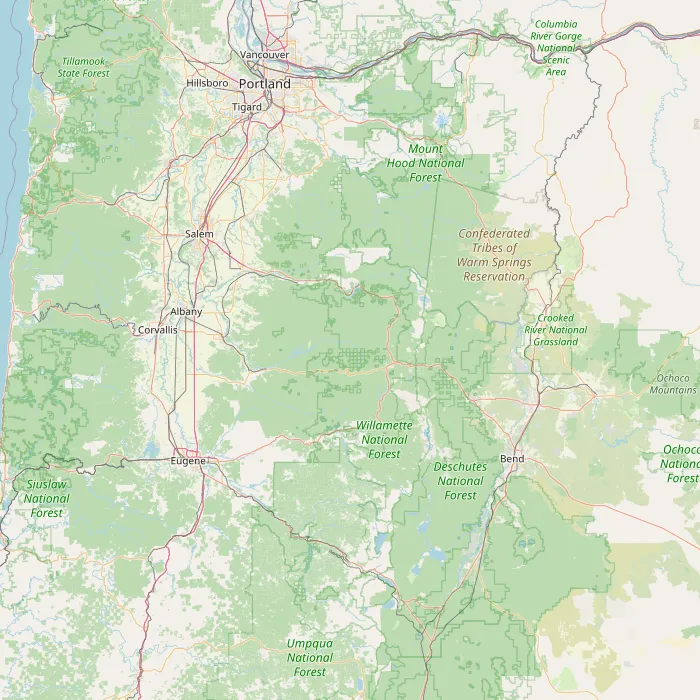Knowing the typical weather patterns is crucial for planning any visit or even considering a move to Bend, Oregon. Understanding the nuances of Bend Oregon weather year round allows travelers and residents alike to prepare for everything from sunny summer days perfect for hiking to snowy winters ideal for skiing. But how is this reliable year-round weather data compiled? This article delves into the statistical analysis and data sources used to provide insights into Bend’s climate.
This report is based on a statistical analysis drawing from historical hourly weather reports and sophisticated model reconstructions spanning a significant period, from January 1, 1980, to December 31, 2016. This extensive dataset allows for a comprehensive view of the typical conditions you might expect when researching Bend Oregon weather year round.
Sources for Bend’s Weather Data
Compiling accurate meteorological data for a specific location like Bend, Oregon, requires integrating information from various reliable sources. The process involves sophisticated techniques to ensure the data reflects the local conditions as accurately as possible, especially when dealing with factors like elevation differences.
Temperature and Dew Point Data Sources
Temperature and dew point estimations for Bend are primarily derived from nearby weather stations. For this analysis, data from three specific stations close enough to provide relevant information were utilized. The records from each station are adjusted to account for the elevation difference between the station and Bend itself.

This elevation correction is performed according to the International Standard Atmosphere model and further refined using relative changes present in the MERRA-2 satellite-era reanalysis between the two locations. The final estimated temperature and dew point values for Bend are computed as a weighted average. The weighting is proportional to the inverse of the distance between Bend and each contributing station, giving more influence to closer stations.
The weather stations contributing to this detailed reconstruction of Bend Oregon weather year round include KBDN, located 6 miles away with a slight elevation difference of -164 ft relative to Bend; KEUG, approximately 95 miles distant with a significant elevation difference of -3,274 ft; and KSLE, about 102 miles away, with an elevation difference of -3,422 ft. These multiple sources help to build a more robust data set.
 Map showing weather data sources contributing to understanding Bend Oregon Weather Year Round
Map showing weather data sources contributing to understanding Bend Oregon Weather Year Round
To assess the consistency of these sources, comparisons between the estimated weather in Bend and the contributing stations are made. It’s important to remember that each source’s contribution is adjusted based on elevation and the relative changes observed in the MERRA-2 data before being factored into the weighted average used for reporting on Bend Oregon weather year round.
Additional Weather and Geographical Data
Beyond temperature and dew point, understanding Bend Oregon weather year round requires data on various other meteorological and geographical factors. These include elements like cloud cover, precipitation, wind speed and direction, and solar flux, all critical for a complete climate picture.

What to Eat in Fort Worth – A Culinary Deep Dive
Discover the Top Restaurants in Denver – A Culinary Journey
Discover Where to Visit in Las Vegas
Data concerning the Sun’s position, such as sunrise and sunset times, are calculated using established astronomical formulas. Specifically, methods outlined in the book “Astronomical Algorithms 2nd Edition” by Jean Meeus are applied for these computations.
All other weather metrics, including cloud cover, precipitation patterns, wind dynamics, and solar flux, are sourced from NASA’s MERRA-2 Modern-Era Retrospective Analysis. This reanalysis is a powerful tool that combines a wide array of measurements from extensive areas within a sophisticated global meteorological model.
MERRA-2 is designed to reconstruct the hourly history of weather across the globe on a 50-kilometer grid. This provides a broad, consistent dataset essential for analyzing long-term weather trends and patterns, which is key to understanding Bend Oregon weather year round.
Information regarding land use comes from the Global Land Cover SHARE database, published by the Food and Agriculture Organization of the United Nations (FAO). Elevation data is provided by the Shuttle Radar Topography Mission (SRTM), a project managed by NASA’s Jet Propulsion Laboratory.
Names, locations, and time zones for various places, including some airports that serve as weather stations, are obtained from the GeoNames Geographical Database. Time zone information specifically for airports and weather stations is further supplemented by data from AskGeo.com. Mapping data utilized is provided by OpenStreetMap contributors. These foundational geographical datasets are vital for accurately positioning and analyzing weather data.
Understanding Data Limitations and Disclaimers
While significant effort is put into compiling and analyzing weather data to present a comprehensive picture of Bend Oregon weather year round, it’s important to be aware of inherent limitations. Weather data, by its nature, can be prone to errors, service outages, and other inconsistencies.
A particular caution is directed towards the reliance on MERRA-2 model-based reconstructions for several key data series. While these models offer tremendous advantages in terms of providing complete data both temporally and spatially, they are based on computer models.
Model-based data can contain inherent errors stemming from the model’s design and assumptions. Furthermore, MERRA-2 data is sampled on a relatively coarse 50 km grid. This means it may not fully capture the localized variations characteristic of many microclimates, which can be relevant in a varied landscape like Oregon. The model also has specific difficulties accurately reconstructing weather in certain coastal areas, especially small islands.
It is further cautioned that any travel scores or recommendations derived from this data are only as reliable as the underlying data itself. Weather conditions at any given location and time are inherently unpredictable and variable. Definitions of travel scores often reflect a particular set of preferences that may not align with everyone’s individual needs or priorities when planning for Bend Oregon weather year round.
Users are encouraged to review the full terms and conditions related to the use of this information, typically found on the site’s terms of service page. While the goal is to provide useful insights into Bend’s climate, this information should be used with an understanding of its statistical nature and inherent limitations.
Frequently Asked Questions About Bend Oregon Weather Data
Understanding how weather data is collected can provide valuable context when planning activities based on the typical Bend Oregon weather year round. Here are some common questions about the data compilation process used in this report:
How is the typical temperature for Bend calculated?
The typical temperature for Bend is calculated using a weighted average of data from several nearby weather stations. This data is first adjusted for elevation differences between each station and Bend, using models like the International Standard Atmosphere and MERRA-2 relative changes, before the weighted average is computed based on distance.
What is MERRA-2 and why is it used?
MERRA-2 (Modern-Era Retrospective Analysis for Research and Applications, Version 2) is a global reanalysis product from NASA. It combines various wide-area measurements with a sophisticated meteorological model to reconstruct hourly weather history on a 50 km grid. It’s used because it provides a temporally and spatially complete dataset, supplementing station data, crucial for analyzing long-term trends in Bend Oregon weather year round.
How accurate is the weather data provided?
The data provided is based on statistical analysis of historical reports and model reconstructions. While compiled using reliable methods, it’s important to note that weather data can contain errors. Model-based data (like MERRA-2) has inherent limitations, including potential model errors and a coarse resolution that might not capture all local microclimates. Therefore, the data represents typical conditions, but actual weather can be unpredictable and variable.
Why are data from stations outside of Bend used?
Data from nearby weather stations are used to provide a broader context and more data points for the analysis. While not located directly in Bend, these stations provide valuable information that, when corrected for factors like elevation and integrated using weighted averages, helps to create a more robust and reliable estimate of the typical conditions for Bend Oregon weather year round than a single source might offer.
Where does data on things like wind and precipitation come from?
Most other weather data, including cloud cover, precipitation, wind speed and direction, and solar flux, are sourced from NASA’s MERRA-2 reanalysis. This comprehensive model-based dataset provides estimates for these variables on a grid covering the area around Bend.
